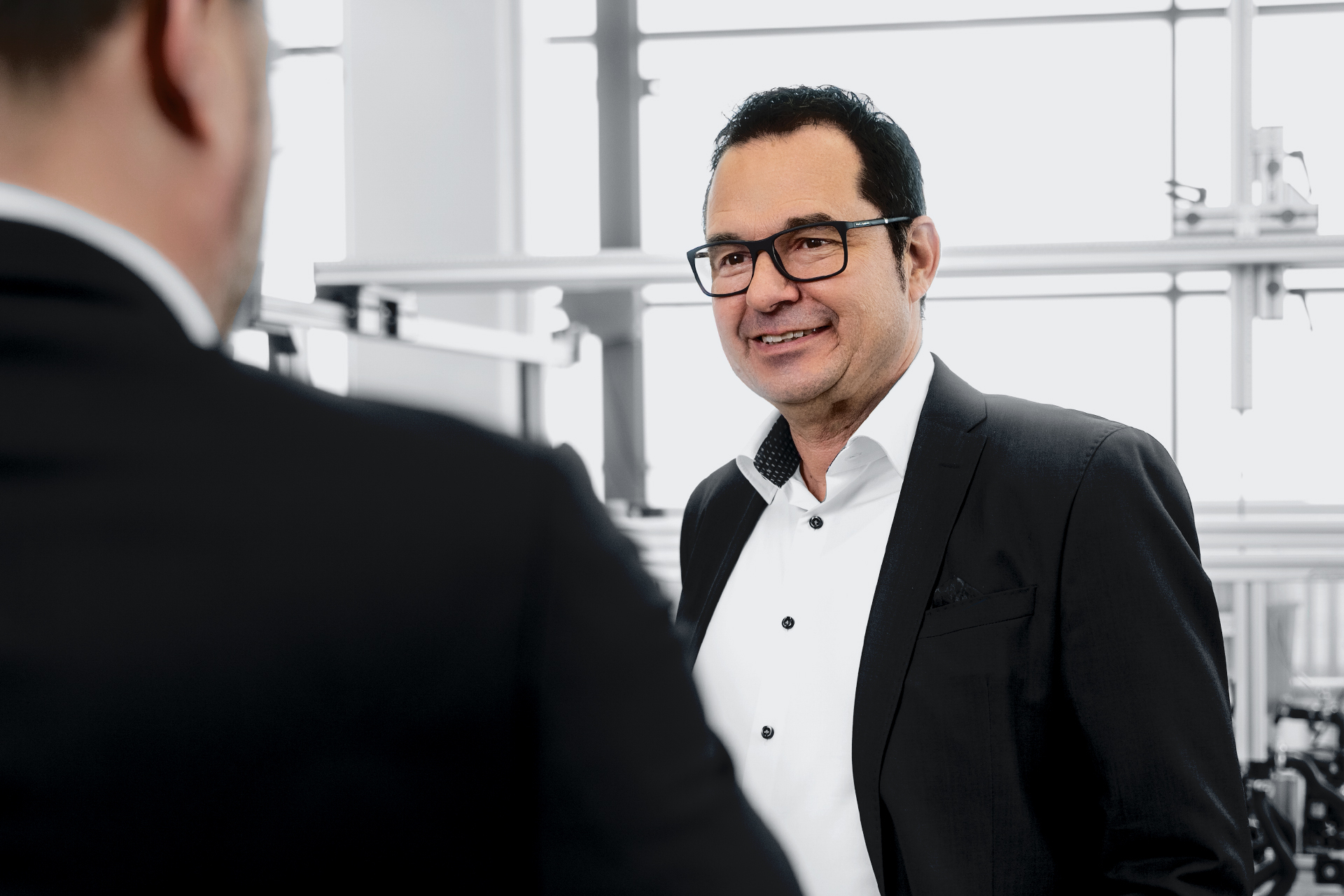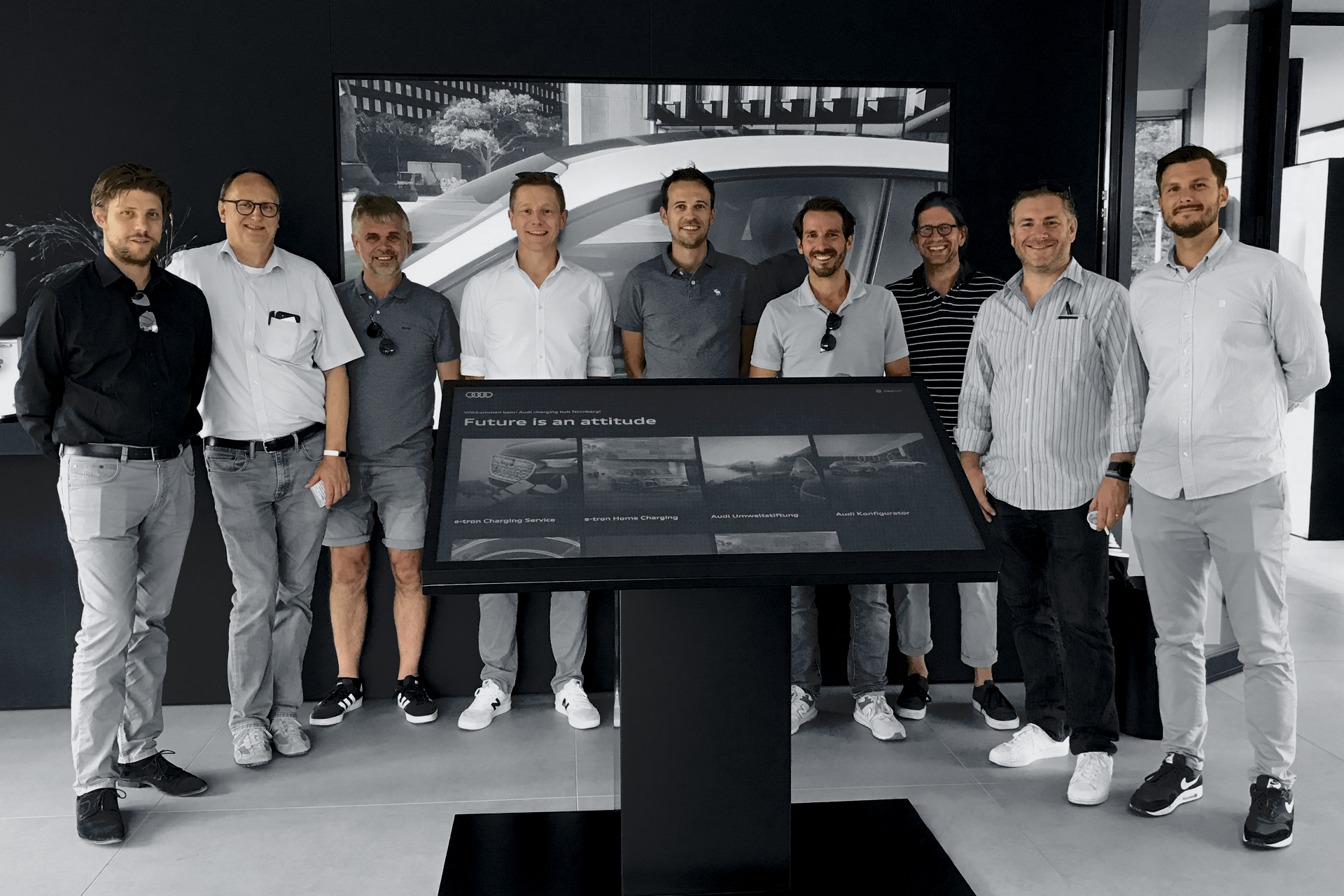What all staff at PSW have in common is the strong sense of purpose with which projects are implemented. What’s our recipe for efficient success? Sound financial planning and new forms of collaboration with our customers.
Planning as a success factor: Staying on course financially with foresight
How does financial planning work even in times of economic instability? Guido Grabo, Board Member for Finance, Compliance and Integrity, explains in an interview how capacity utilisation is ensured long term and which investments are possible through strategic cost planning at PSW.

We know the state of health of our projects well and know in good time where we need to take countermeasures.
In 2021, the equity investment strategy between Audi and PSW was approved, which further strengthens PSW's positioning as a 100 percent Audi subsidiary and general developer. In this way, capacities and project assignments can be planned strategically and over the long term. “As a general developer, we take on the management of entire vehicle projects and, thanks to our broad partner network, we can guarantee our customers stable and attractive prices. Since we are involved in many projects, there are always cross-model and cross-market synergies that make us a sought-after development partner,” explains Guido Grabo, Board Member for Finance, Compliance and Integrity. “In addition, as a subsidiary, we align our process and security standards with Audi, which enables the rapid and flexible assignment of projects.” In this way, utilisation of PSW's capacity is secured in the long term.
Cost transparency in all projects
According to Mr. Grabo, the basis of sustainable business development is strategic cost and revenue planning. “We regularly track the financial KPIs of the projects and conduct cost reviews.” This information forms part of the cost and revenue planning via a risk assessment. “We know the state of health of our projects well and know in good time where we need to take countermeasures,” says Mr. Grabo. The cost and revenue planning was recently part of a financial review carried out by Audi and all points passed review.
Consistently checking revenue potential
In order to continue to ensure and stabilise the sustainable profitability assumed in the plans, PSW has also launched a business program in which processes as well as revenue and cost potentials are monitored on an on-going basis. These include, for example, digitisation projects that are currently intended to replace time-consuming paper-based processes, or the examination of material overheads such as real estate or service provider contracts for optimisation potential. “We can use defined KPIs to measure and control the success of our planning with the business program,” explains Mr. Grabo.
More earning power for future investments
“We can use the additional earning power to invest in the future of PSW. On the one hand, this means keeping project-specific infrastructure up to date, such as test benches or well-equipped workshop areas. On the other hand, we are also investing in our attractiveness as an employer, for example by equipping all employees with a tech-package for mobile working if required or by creating space for new forms of collaboration. This way, economic planning and taking action also pays off for all PSW employees.”
Implementation as a success factor: Collaboration using the Captain's Model
As part of the equity investment strategy, PSW is increasingly taking on larger development projects, most recently, the e-tron GT for example. This requires new ways of working together to successfully meet all milestones. How this works is explained by Dr. Miklos Kiss, Development Captain for the e-tron GT on the Audi side, and Stefan Homann, Project Manager for the e-tron GT at PSW.
The larger the project, the more complicated the coordination loops and approval processes? Not when it comes to collaboration between Audi and PSW. This is because the parent company and subsidiary introduced new and innovative forms of cooperation at an early stage. The so-called “Captain's Model” relies on clear responsibilities and lean decision-making on both sides. The aim is to minimise the amount of control in order to create freedom for the development and industrialisation of new vehicles.
Captains in dialogue
The focus is on a small team of Audi and PSW captains, who are largely responsible for the management of the project from concept to release. The captain’s model was used for the first time at PSW during the development of the Audi e-tron GT. Dr. Miklos Kiss is driving the project forward as Audi's Development Captain. “I am one of three Audi captains in the e-tron project and am responsible for the exterior body, interior body, electronics and driver assistance systems. In my role, I act as the bridge between PSW as the general developer and all decision-makers involved in the project. Then there are the approvals before the vehicle is allowed on the road,” reports Miklos. Together with the PSW captains, tandems are formed as part of the collaboration: “With the captain duos, we can ensure that there is efficient cooperation on all topics and that both sides have direct official communication channels,” says Stefan Homann, who works as a project manager for the e- tron GT at PSW.
With the captain duos, we can ensure that there is efficient cooperation on all topics and that both sides have direct official communication channels.
In my opinion, the biggest benefit is that all of us involved in the project think integrally. We are not just working on a component or a function, we are developing an entire vehicle (...).
Integral collaboration
Both see great advantages in the close cooperation between all those involved and the personal responsibility within the project. “In my opinion, the biggest benefit is that all of us involved in the project think integrally. We are not just working on a component or a function, we are developing an entire vehicle and can set many priorities ourselves to create a good end product. The people who are working one hundred percent on the project are the ones making the decisions,” explains Miklos. “For us, the large scope of development means that we have to make decisions ourselves and reach the goal ourselves. That makes the e-tron GT a very attractive project for us. Not just because the car is beautiful, but because we can bring so many skills together in a small space,” adds Stefan.

The team spirit is right
The collaboration in new structures has already proven itself with the e-tron GT project. For major projects in the future, the captain's model is to be adapted and further developed depending on the scope of development. In the lighthouse project between Audi and PSW, the group has definitely grown together: “The very open way of working together is due to the small group. We have a core team of some 25 people including sales, production, quality and so on. They are always involved, we know each other – and that helps in our daily work together,” sums up Miklos.

